Have you ever really noticed the little stickers on your apples and oranges? Today, many stickers in the U.S. feature barcodes or a puzzling string of numbers. But around the world, fruit stickers have become a collector’s item, replete with jazzy typography, vibrant illustrations, and playful branding that goes back over a century.

As one of the world’s largest exporters of fruit, Spain has them in droves. Since the country started exporting oranges and other citrus fruit at the turn of the 20th century, Spain has developed a robust infrastructure producing fruit stickers, paper wrappers, and custom-printed fruit crates.
These little gems of graphic design are now the subject of a new exhibition in Madrid. Featuring more than 300 Spanish brands, the aptly named Frutas de Diseño (Design Fruits) shines a light on the colorful history of fruit branding in Spain from the 1950s onward—and the wild variety of graphics that have been used to market fruits there and abroad.
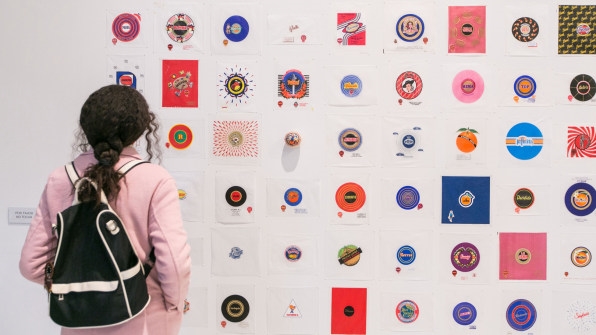
The exhibition is located in CentroCentro, a striking cultural venue that was once Madrid’s main post office building. It includes 250 iterations of paper wrappers, a popular way of packaging fruit in Spain, more than 100 fruit crates stacked like totems, and a board with 360 real, tiny stickers in all kinds of shapes, from circles to ovals to leaves. Most of them depict a simple wordmark, with a few exceptions like an abstract version of the sun, or an illustrated lemon cut in half.
The use of branding on Spanish produce dates back to the country’s golden age of citrus exporting in the 1920s and 1930s. “They realized if they exported oranges with a name, they would sell more,” says Leandro Lattes, the creative director of Spanish design studio El Vivero, which curated the exhibition. Valencia oranges are famous around the world today, but when the export was booming, having a name like “Infinita” or “La Soculente” (The Succulent) helped businesses, often small family-run affairs, stand out from the crowd.
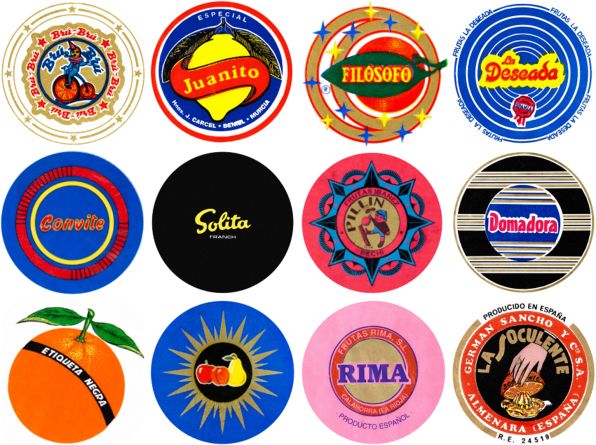
Inevitably, with noteworthy names came noteworthy designs. In the early 1900s, Lattes says that graphics were highly sophisticated. Plastic stickers didn’t exist yet, but brands would hire artists to draw elaborate illustrations on the protective wrappers and sometimes even sign them. (After oranges were coated in wax to reduce spoiling, he says paper wrappers became all about the marketing.) To this day, some “Soculente” oranges come in a striking paper wrapper that portrays a slender hand—complete with red nail polish and a sparkling ring—holding half an orange over a juicer.
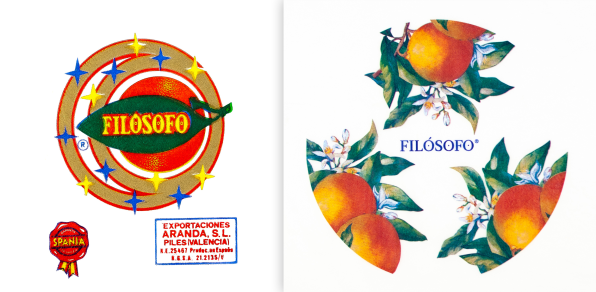
After World War II, the intricate illustrations gave way to more abstract graphics that made use of typography and striking colors. In recent years, some companies have continued to update their brand identity. The 1960s brand Filosófo, for example, once sported a paper wrapper with concentric circles, illustrated stars, and a serif typeface. Today, it features a more contemporary typeface and a pristine, watercolor-like rendition of oranges adorned with blossoms; the stickers are shaped like leaves).
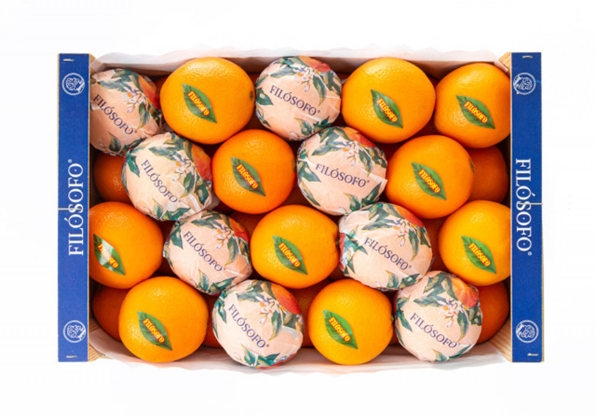
In the U.S., labels on fruit crates became widespread in the late 1890s, when the country’s national marketplace emerged and grocers needed help to identify oranges that were grown in, say, Southern California, but displayed in a New York market stall. Back then, labels were mostly meant to catch the customer’s attention, but their function has since evolved to convey product information as well. Known as PLU codes (for price look-up), these numbers—4031 for Fuji apples, or 3283 for Honeycrisp apples, for instance—have been around since the ’90s, helping supermarkets around the world distinguish between conventionally grown produce (a four-digit code) from organic products (a five-digit code).
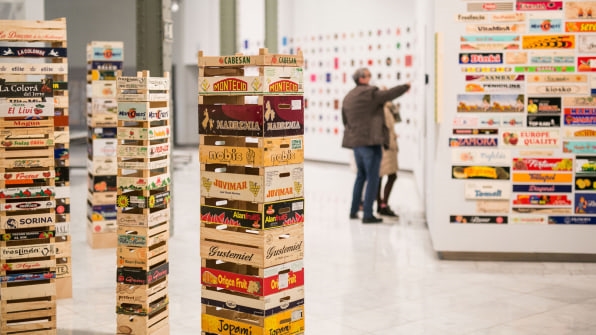
Over the past few years, some companies have been experimenting with lasers, etching numbers, and brand names on the skin on the actual fruit. While in its early days, the practice might gain steam in countries like France, which banned disposable plastic packaging and produce stickers across 30 fruits and vegetables in January. (According to a report by the U.S. Department of Agriculture reports, the ban may threaten the United States’ exports there of stickered sweet potatoes and grapefruits, which together amount to $28 million in annual sales.)
From a pure marketing standpoint, there isn’t much data to prove that branded fruits sell more than unbranded ones. That said, given the herculean operations required to design, print, and distribute the stickers, let alone the effort spent printing graphics on wood crates, Lattes says “companies wouldn’t do it” if it didn’t make good business sense.
So next time you find yourself peeling a sticker from your orange, take a closer look before you chuck it in the trash, because you may be holding one of the tiniest forms of branding ever created.
Fast Company , Read Full Story
(43)